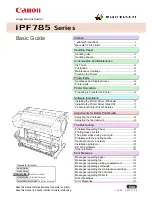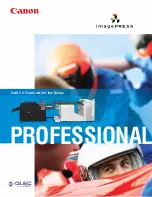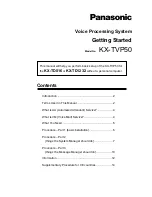
48-466 Operators Manual
31
CHAPTER 5: PRINTER COMMANDS
The 48-466 printer has a large and versatile collection of control codes to meet the special needs
of labeling applications. Most of the commands use a ^D control sequence, however the printer also
recognizes a selected number of other control sequences.
For all the commands listed in this manual, the 48-466 will recognize either the one-character
control character or the two-character caret and alpha character sequence. In other words, for a
PC key board, the same command can be generated either by holding down the control key and
pressing the letter or by entering two characters - the ^ (a caret, the character generated if you press
the Shift key and the 6) and an alpha character (upper or lower case).
To protect against errors, in situations where two-character caret-alpha sequences are used
exclusively as printer commands, control character recognition can be disabled. This is done either
through software dip switch #1 (^D21) or command ^D93.
Some main-frame and mini-computers cannot use the ASCII '^' character. In these cases substitute
the ASCII pipe symbol '|' or use the one character control-code representation.
The caret and pipe characters can be used in text or bar codes by entering them twice.
5.1
SPECIAL PRINTER CONTROL CODES
The following control characters perform special functions. All other control characters are ignored.
Some of these instructions are also accessible through a ^D sequence.
^A
Accumulator Mode:
Used to supply parameters for ^D commands.
These parameters must be positive integers and are generally decimal numbers but they
can however be binary if preceded by an ASCII B. (^AB00000001^D21
5
equals ^A1^D21
5
>
^B
Text entry mode:
Instructs the printer to enter printable text entry mode. This command (or
the preferred ^D2
5
) must be sent before the text information. This command is equivalent
to ^D2
5
but does not require a
5
after it (^Btext data string). Because control B is shorter it
is easier to use in direct terminal mode. In general it is better to use ^D2 inside a file or
program.
^C
Print a label:
Starts the print cycle or batch. This command is equivalent to ^D3
5
but does
not require a
5
after it. Because control C is shorter than ^D3
5
it is easier to use in direct
terminal mode. In general it is better to use ^D3
5
inside a file or program.
^D
Command Mode:
Used to issue commands to the printer. This command is normally
preceded by a ^A sequence (see above). ^D commands must be terminated with a
5
or
another control sequence (^A9^D73^D3
5
equals ^A9^D73
5
and ^D3
5
.
^E
Printer enquiry:
See section 5.2 for more details (equivalent to ^D5
5
but does not require
a
5
after it). Because control E is shorter than ^D5
5
it is easier to use in direct terminal
mode. In general it is better to use ^D5
5
inside a file or program.
^M
Terminate text or data string:
Must be used to terminate a text or data string. (Same as
a carriage return or enter key on a PC keyboard.)
Содержание 48-466
Страница 2: ......
Страница 6: ...48 466 Operators Manual...
Страница 8: ...48 466 Operators Manual 2...
Страница 16: ...Basic Operation Chapter 2 48 466 Operators Manual 10...
Страница 22: ...Communications Chapter 3 48 466 Operators Manual 16 Microcom Label Figure 8...
Страница 28: ...Communications Chapter 3 48 466 Operators Manual 22...
Страница 60: ...Downloadable Graphic Images Chapter 6 48 466 Operators Manual 54...
Страница 70: ...Bar Codes Chapter 8 48 466 Operators Manual 64...
Страница 72: ...48 466 Operators Manual 66...
Страница 84: ...Quick Reference Command Summary Appendix A 48 466 Operators Manual 78...
















































